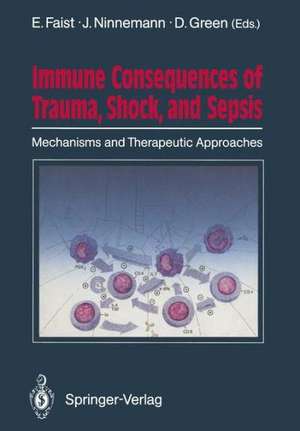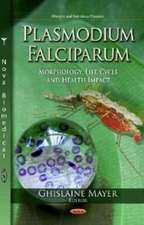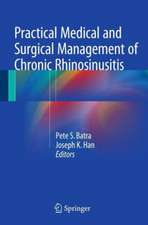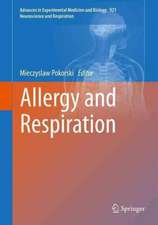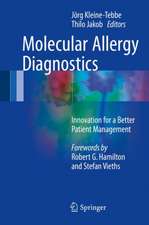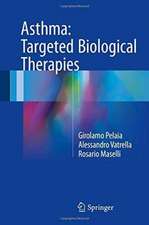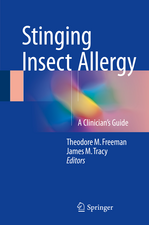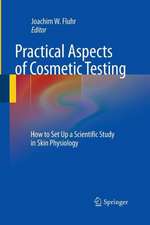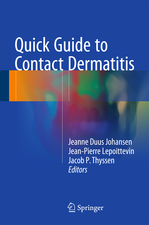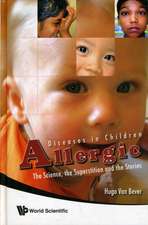Immune Consequences of Trauma, Shock, and Sepsis: Mechanisms and Therapeutic Approaches
Editat de Eugen Faist, John L. Ninnemann, Douglas R. Greenen Limba Engleză Paperback – 15 dec 2011
Preț: 1114.91 lei
Preț vechi: 1173.60 lei
-5% Nou
Puncte Express: 1672
Preț estimativ în valută:
213.37€ • 221.93$ • 176.14£
213.37€ • 221.93$ • 176.14£
Carte tipărită la comandă
Livrare economică 15-29 aprilie
Preluare comenzi: 021 569.72.76
Specificații
ISBN-13: 9783642734700
ISBN-10: 3642734707
Pagini: 592
Ilustrații: XX, 563 p.
Dimensiuni: 170 x 242 x 31 mm
Greutate: 0.93 kg
Ediția:Softcover reprint of the original 1st ed. 1989
Editura: Springer Berlin, Heidelberg
Colecția Springer
Locul publicării:Berlin, Heidelberg, Germany
ISBN-10: 3642734707
Pagini: 592
Ilustrații: XX, 563 p.
Dimensiuni: 170 x 242 x 31 mm
Greutate: 0.93 kg
Ediția:Softcover reprint of the original 1st ed. 1989
Editura: Springer Berlin, Heidelberg
Colecția Springer
Locul publicării:Berlin, Heidelberg, Germany
Public țintă
ResearchDescriere
Sepsis and infection are the major enemies of the intensivecare patient in whom immunological defenses are severelyimpaired. This major problem is thefocus of attention inthis book, based on the presentation of the FirstInternational Congress on the Immune Consequences of Trauma,Shock, and Sepsis, which is one of the first attempts toexchange ideas on the state-of-the-art in this area ofimmunology. Both basic and clinical research, including newcentres of attention, are described. The growing role ofimmunology in medicine opens new avenues to the under-standing of trauma and sepsis and will allow the design ofnovel therapeutic approaches.
Cuprins
Section 1 General Aspects.- The Immune Consequences of Trauma: An Overview.- Trauma: Immune Deficiency, Immune Suppression, or Just Immune Cell Redistribution?.- Neuroendocrine Response to Severe Trauma and Sepsis.- Section 2 Trauma and Specific Immune Mechanisms.- 2.1 Monocyte T-Cell Interaction and Its Mediators.- Regulation of Hematopoiesis by Growth Factors: Proliferation of the Murine Macrophage as a Model for Stimulatory and Inhibitory Effects.- The Activation of Immune Effector Cells: Role of Helper and Inflammatory CD4 T Cell Subsets.- The Role of Inhibitory Cells in Burn Trauma-Associated Immunodeficiency.- Macrophage — T-Cell Interactions in Surgical Sepsis.- The Relationship Between T Cells and Interleukin 1.- Trauma-Induced Alterations of the Lymphokine Cascade.- Alterations of Monocyte Function Following Major Injury.- Possible Use of the Monocyte/Macrophage Activation Marker Neopterin for Clinical Monitoring of Sepsis-Related Multiorgan Failure.- Expression of Functional Interleukin 2 Receptors in Burn Patients May Be Regulated by Interleukin 3.- Role of Monocyte HLA-DR Expression Following Trauma in Predicting Clinical Outcome.- Early Alterations in HLA Class II Expression and Response to Tetanus Toxoid by Peripheral Blood Monocytes from Patients with Injury from Burns or Trauma.- Lymphocyte Surface Antigen Expression Following Lectin Stimulation: An Index of Early T-Cell Dysfunction After Controlled Murine Injury.- Role of T-Cell Lymphocyte Populations and Their Products as Mediators of Immune Depression in Thermal Burns.- 2.2 Trauma and B-Cell Function.- The Influence of Mechanical Trauma on the B-Cell System: Phenotypes, Terminal B-Cell Maturation, Immunoglobulin Synthesis and Influence of Lymphokines.- Activation of B Cells Spontaneously Secreting Ig After Surgery.- Section 3 Trauma and Non-Specific Immune Mechanisms.- Pathobiochemical Mechanisms in Inflammation.- Cytokines and Oxygen Radical Responses.- Structure and Properties of a Novel Neutrophil-Activating Factor (NAF) Produced by Human Monocytes.- The Effect of Injury on Murine Neutrophil Oxidative Metabolism.- Opsonophagocytosis in Patients Undergoing Abdominal Surgery.- Effects of Pyocyanine, Liberated by Pseudomonas aeruginosa, on the Oxidative Burst of Phagocytes.- Polymorphonuclear Leukocyte Function Following Burn and Mechanical Injury: Regulation and Kinetics.- The Role of Complement in Injury.- Control of Acute-Phase Protein Production.- Elastase from Polymorphonuclear Leukocytes, Complement and C-Reactive Protein in Multiple Trauma Patients.- Flow Cytometric Analysis of Phagocytosis, Respiratory Burst, Intracellular pH, and Cytosolic Free Calcium of Granulocytes of Post-traumatic and Septic Patients.- Cellular and Humoral Reactions of the Nonspecific Immune System of Polytraumatized Patients with and without and the Adult Respiratory Distress Syndrome.- Granulocyte Adherence in Patients Undergoing Cardiac Surgery Under Cardiopulmonary Bypass.- Studies on the Release of Lipoxygenase Products from Granulocytes of Severely Burned Patients.- Section 4 Endotoxin, Prostaglandin, and other Triggers of Trauma-Induced Immunosuppression.- Immune Modulation by Microorganisms.- Endotoxin-Induced Impairment of Host Defenses.- Prostaglandins and Leukotrienes in Monocyte/T Cell Function in Stress and Trauma.- Serum Mediators and the Generation of Immune Suppression.- Trauma Peptide T-Cell Suppression: Mechanisms of Action.- Role of Platelet-Activating Factor and Structurally Related Alkyl Phospholipids in Immune and Cytotoxic Processes.- Regulatory Role of Platelet-Activating Factor on Cytokine Production.- Potential Role for Platelet-Activating Factor and Tumor Necrosis Factor in the Immune Impairments in Shock and Trauma.- Suppression of Endotoxin-Induced Monokine Release by Human Serum Fractions.- Role of Corticosteroids in the Pathogenesis of Posttraumatic Thymic Involution.- Section 5 Immunology of the Skin and Wound Healing.- Immunology of Skin.- Immune Regulation of Wound Healing.- Aspects of Immunological Control of Compensatory Organ Growth.- Section 6 Impact of Therapeutic Regimen on Immune Function.- Relationship Between Immune Function and Posttrauma Morbidity and Mortality.- Immunological Alterations Following Simple Hemorrhage.- Blood Transfusions: The Immunologic Sequelae.- Nutrition and Resistance to Sepsis.- The Gut-Origin Septic States.- The Influence of Anesthetic Agents on the Immune Response: A Crucial Factor in Immune Suppression?.- Comparison of the Effects of General Endotracheal and Epidural Anesthesia on the Immune Functions.- Effect of Splenectomy Upon the Antibody Response to Pneumococcal Immunization.- Surgical Aspects of AIDS.- Section 7 Restoration of Impaired Immune Response: In Vitro Models and Clinical Trials.- Immunomodulation and the Surgeon.- Immune Consequences of the Acute Stress Response and Sepsis.- Immunomodulation in Animal Models of Injury.- Use of Plasma Exchange in Thermally Injured Patients.- In Vivo Infusion of a Single Dose of Endotoxin in Healthy Humans Causes In Vitro Alterations of Both T-Cell and Adherent Cell Functions.- Treatment of Burn Patients with Polymyxin B: Effects on Lymphokine Regulation.- Mechanisms of Neutralization of Endotoxin by Monoclonal IgG Antibodies to Lipopolysaccharide.- Investigations to Demonstrate the Antibacterial and Antitoxic Efficacy of an IgM-Enriched Intravenous, Immunoglobulin Preparation.- Therapy of Secondary T-Cell Immunodeficiencies with Biological Substances and Drugs.- Immunomodulation as a Potential Therapeutic Approach in Immunodeficiencies.- Perioperative Immunomodulation in Patients with Major Surgical Trauma.- Effect of Therapeutic Gamma-Interferon Administration on Wound Infection After Resuscitated Hemorrhagic Shock.
